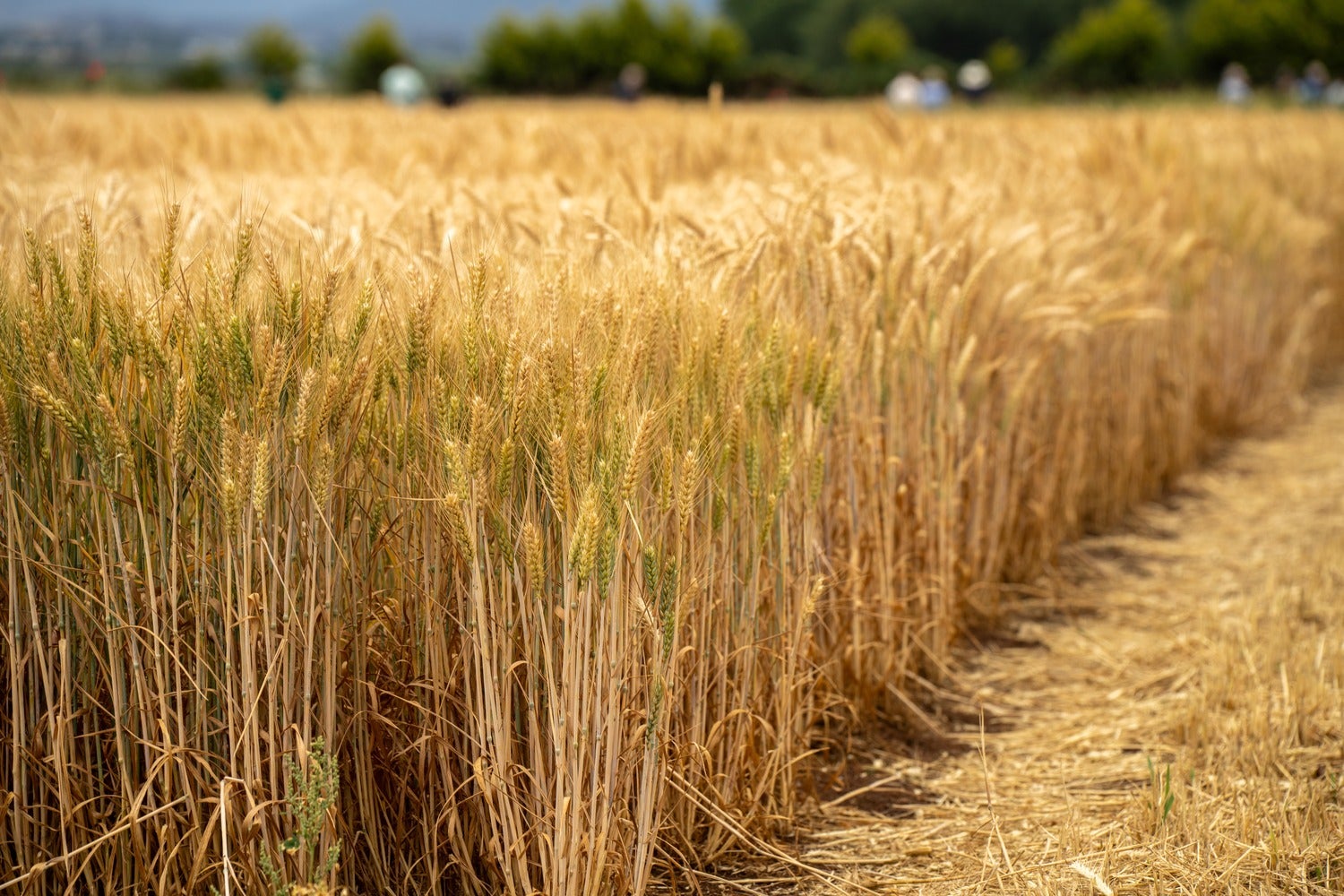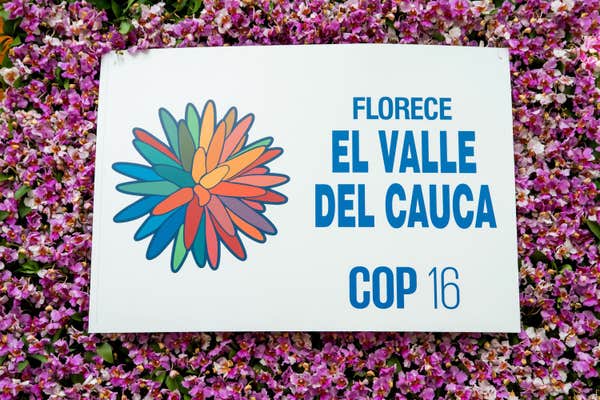Hi y’all, and welcome back to one5c! We’re getting down to the wire when it comes to climate action. A new report from the U.N. (released in the midst of the most important biodiversity meeting of the year) estimates that with the policies in place right now, we’re looking at warming of around 3 degrees Celsius by the end of the century—more than double the 2015 Paris Agreement goals. This doesn’t mean you should freak out—it means that pushing for climate action is more important than you might have thought.
Inger Andersen, the executive director of UNEP, backs us up: “Every fraction of a degree avoided counts.” Every tiny action we take, every moment we hold our officials accountable, every time we resist falling into a consumerist trap matters. So keep fighting, keep voting, and keep talking. We’re here with you every step of the way. —Sara Kiley
WHAT WE’RE INTO THIS WEEK
By Olivia Gieger and Sara Kiley Watson

Greenwatch
Big Ag loves the term ‘regenerative agriculture’ too
“Regenerative agriculture” is used to describe a lot of things—cover cropping, no-till farming, and organic crops, for example—but it’s important to remember that there’s no consistent definition for what it means exactly. While large agricultural corporations such as Cargill, Bayer, and Unilever love to throw the expression around with vague descriptors and nice-sounding promises, their business practices don’t actually change in substantial ways, according to a September report from the New Climate Institute covered recently by DeSmog. The moral of the story here is that if something sounds too good to be true—like “regenerative grazing” making your hamburger sustainable—it’s probably greenwash. Play it safe, stick to climate-friendly foods like local fruits and veg, and be skeptical of claims from Big Food.
Report card
The UN gives the world’s climate action a failing grade
In the latest Emissions Gap report, the U.N. paints a grim picture: Globally, we have made little progress toward the Paris Agreement’s 1.5 degrees C goal. Staying on a business-as-usual course puts us on track to reach an increase of 2.6 to 3.1 degrees C in the coming century. Last year, emissions across the world reached 57 gigatons, compared with 36.8 Gt in 2022, and are on track to stay there. To reach the Paris goals, countries need to cut emissions 42% in the next six years—and keep reducing them through the next decade. The U.N. report doesn’t foreclose all potential for cooler futures, but it says that the window is rapidly closing: “[The] Emissions Gap report is clear: We’re playing with fire; but there can be no more playing for time,” António Guterres, U.N. secretary-general, said in a video release. “We’re out of time.”
Cause for optimism
Battery capacity explodes across the US
Batteries are an essential ingredient for reaching a low-carbon future, especially when it comes to EVs and for stabilizing a grid powered by renewable electricity. The U.S.’s electric battery capacity is growing exponentially—in the first seven months of the year, the U.S. has expanded by 5 GW of battery capacity according to the Energy Information Administration (EIA). For context, a regular nuclear reactor produces 1 GW of power, so that’s the capacity of five nuclear reactors. The agency predicts growth could double again to 40 GW by the end of the year. The benefits of such a boom are already evident: Batteries helped keep the lights on in California when in past years heat waves led to blackouts or electricity rationing, reports The Guardian.
Good read
The Arctic National Wildlife Refuge’s future hangs in the balance
The fate of a conservation area the size of South Carolina is among the countless climate questions that hang on the outcome of the upcoming election. Some want to open the Arctic National Wildlife Refuge in northeastern Alaska up for drilling, while others argue that will destroy the delicate ecological balance and rich biological diversity of this landscape. In a breathtaking photo and video-filled feature, a team of Washington Post reporters journeyed across this area, visiting a whale feast, watching porcupine caribou migrate, and catching traces of the endangered polar bears that depend on the ecosystem. All the while, they explore the conflict the local community faces, balancing proposed economic growth with protection of one of the last remaining wild places on the planet.
MIC-DROP CLIMATE STAT
1.3 billion
The pounds of pumpkin that ends up in U.S. landfills every year. Our pals at Cool Beans have a few ideas to make sure your jack-o’-lantern doesn’t end up haunting a dump.
WHAT’S THAT?
The first COP of 2024 is all about life on Earth
By Tyler Santora
A familiar-sounding conference is happening in Cali, Colombia, from Oct. 21 to Nov. 1—and the results could impact issues ranging from environmental justice to marine protection zones. We’re talking about COP16. This isn’t the same thing as the annual, emissions-focused COP (Conference of Parties) held by the United Nations—you know, the one that passed the 2015 Paris Agreement, which solidified the 1.5 degrees C goal to keep the worst of climate change from occurring. COP16 is similar (and confusingly named!), but it only happens every other year. Instead of focusing on global warming, it’s all about preserving the diversity of life on our planet, which is essential to the health of natural ecosystems and humanity alike.
COP15, 2022’s biodiversity conference, was the biggest yet. Nearly 200 nations agreed to a road map for the decade called the Kunming-Montreal Global Biodiversity Framework, which aims to protect at least 30% of the planet’s land, fresh water, and oceans by 2030. But the majority of member countries haven’t taken initial steps to reach that goal. Putting that agreement into action is the main objective of COP16.
What is a COP—and why are there two of them?
Actually, there are three COPs. Although their focuses overlap, each has a different priority: climate change, biodiversity, and land degradation. The three conventions were formed in 1992 as a result of the U.N.’s Earth Summit, a global conference on humans’ effects on the environment.
The conferences are each weeks long, which makes them too large to combine, according to some experts. And not every nation is a member of all three conventions; the U.S., for example, hasn’t signed on to the Convention on Biological Diversity (CBD) that was set in place in 1992. Nevertheless, the three coordinate on policy and scientific reports, and all of them are taking place in 2024.
“There’s a critical relationship between biodiversity and climate change and these issues cannot be treated in isolation,” says Crystal Davis, global director of the Food, Land & Water Program at World Resources Institute. “Protecting and restoring nature is essential for effective climate action.”
What are COP16’s hot topics?
The main objective is to protect 30% of land and water ecosystems by 2030. But only 29 out of 196 countries met a U.N. deadline to submit their road map for meeting this goal, which they were supposed to do before the start of the conference.
There are several other major goals of COP16: enhancing inclusion and representation of Indigenous people in biodiversity decision-making, addressing biopiracy—the issue of wealthy nations overwhelmingly profiting from species found in poor countries—and establishing funding for biodiversity protection, with developing countries receiving aid from wealthy ones. According to the U.N., spending needs to increase to $542 billion per year by 2030 to halt nature loss and meet climate goals.
So far, few funding projects have been approved. Most of these are based in the Global South but still managed by major banks and organizations in the Global North, to the frustration of Indigenous populations and representatives from countries home to some of the world’s greatest biodiversity hotspots.
What role you can play
The main thing we can do to support these efforts is vote—and we’re not just talking about the presidential election. Congress holds the key to making major steps toward nature protection reforms and financing. That includes ratifying international agreements such as the CBD, which get the U.S. invested in these world-changing biodiversity decisions. Now’s the time to make a voting plan and investigate the people on your ballot.

